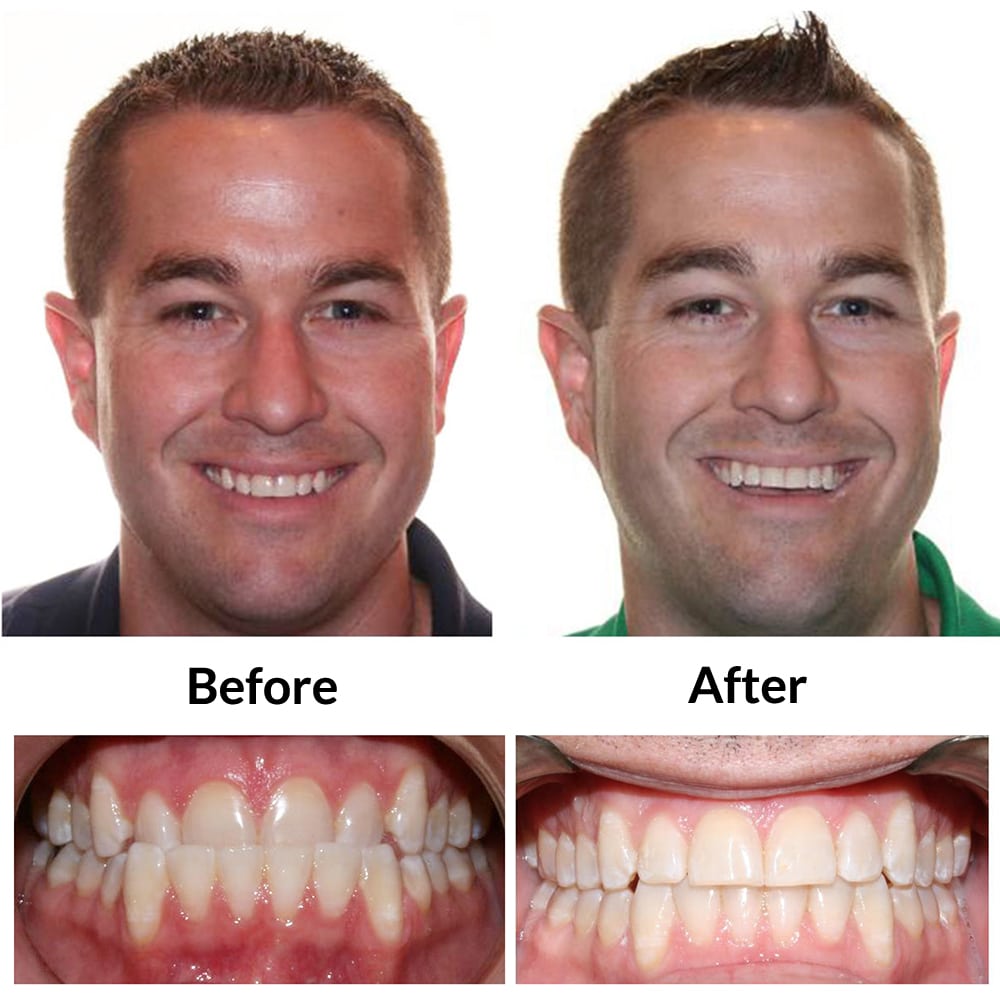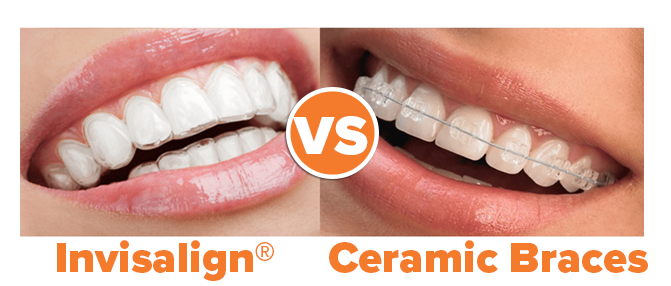Invisalign vs. Traditional Dental braces: Which Alternative Is Right for You?
When considering orthodontic therapy, the selection in between Invisalign and traditional braces offers a number of vital elements that merit careful evaluation. Invisalign provides a very discreet option with removable aligners, while typical braces supply an extra visible yet effective option for serious misalignment. Each choice incorporates distinct advantages and drawbacks associated with looks, convenience, treatment duration, and expense. Recognizing these subtleties is essential for making an educated decision that aligns with your personal preferences and lifestyle. The concern stays: which alternative will best satisfy your orthodontic demands and assumptions?
Overview of Therapy Alternatives

On the other hand, typical dental braces contain steel braces and cables that are bound to the teeth. This technique uses continual stress gradually to attain placement. While effective for intricate orthodontic issues, traditional dental braces call for regular brows through for modifications and can posture challenges in keeping dental hygiene as a result of the difficulty of cleaning around cords and brackets.
Both options have their advantages, and the choice usually rests on details dental conditions, way of life choices, and person compliance. Inevitably, speaking with an orthodontic expert is vital for figuring out one of the most suitable treatment plan customized to individual demands. Recognizing the subtleties of each option can dramatically affect the general success of orthodontic therapy.
Visual Considerations
A considerable variable affecting the option between Invisalign and traditional dental braces is the visual charm each therapy supplies. Invisalign aligners are crafted from clear plastic, making them practically undetectable when worn.
In contrast, conventional braces contain metal braces and cords, which can be more obvious. While improvements in orthodontic technology have resulted in the development of smaller sized braces and colored elastics, typical braces still preserve a more conspicuous account. For some people, the visibility of dental braces may prevent them from looking for necessary treatment.
Ultimately, the selection in between Invisalign and standard braces might depend upon personal preferences pertaining to visual appeals. Clients who focus on discretion often lean towards Invisalign, while those that are less concerned concerning presence may select traditional dental braces. Understanding the visual ramifications of each choice is crucial for making an educated choice that straightens with one's lifestyle and preferences.
Comfort and Convenience

In regards to ease, Invisalign aligners are detachable, allowing individuals to enjoy their favored foods without limitation and preserve optimum dental hygiene. Brushing and flossing are streamlined, as the aligners can be secured during these regimens, whereas typical braces call for cautious steering around wires and braces.
Additionally, Invisalign's modern system permits less orthodontic brows through. Patients usually get numerous sets of aligners at the same time, which can improve the treatment procedure and minimize time spent in the orthodontist's chair. On the other hand, traditional braces necessitate regular modifications, making them less hassle-free for those with active routines. Invisalign. Overall, the convenience and convenience of Invisalign make it an appealing choice for many people seeking orthodontic therapy.
Treatment Period and Effectiveness
While both Invisalign and traditional braces are effective in correcting oral misalignments, the period of treatment can differ considerably in between the two choices. Typically, Invisalign therapy can take anywhere from 12 to 18 months, relying on the complexity of the instance. The clear aligners work by gradually shifting teeth into their wanted placements, and normal follow-ups with an orthodontist help ensure development stays on track.
On the other hand, typical braces frequently require a longer commitment, normally ranging from 18 months to 3 years. This is because of their set nature and using cords and brackets, which can be much more effective for complex situations and extreme misalignments (Invisalign). The treatment performance of standard braces is well-documented, as they permit exact changes and better control over tooth activity
Inevitably, the option between Invisalign and typical braces may depend upon both the anticipated treatment period and the details oral concerns handy. Consulting with an orthodontist is crucial, as they can provide customized referrals based upon private needs, making sure the chosen approach straightens with wanted timeframes and end results.
Price Contrast and Insurance Coverage Options
Expense plays a significant function in the decision-making procedure for individuals considering orthodontic therapy, whether choosing Invisalign or typical dental braces. On standard, the cost of Invisalign ranges from $3,000 to $8,000, while typical braces normally cost in between $2,000 and $6,000. Elements affecting these expenses include the complexity of the case, the period of treatment, and geographical place.
Insurance protection can substantially influence out-of-pocket costs. Numerous oral insurance policy strategies supply partial coverage for orthodontic therapies, yet the specifics can differ commonly. It is critical for people to evaluate their insurance plan to identify the level of coverage for either alternative. Generally, standard dental braces might be extra frequently covered by insurance coverage plans read this post here contrasted to Invisalign, which some insurers classify as an aesthetic treatment.
Additionally, a number of orthodontic practices offer adaptable settlement strategies, making both therapy options much more accessible. Individuals need to make inquiries regarding prospective funding choices and discount rates for in advance settlements. Reviewing the complete expense, including insurance policy advantages and payment plans, is vital for making a notified why not try these out decision that straightens with both aesthetic preferences and budget considerations.

Final Thought
In summary, the selection in between Invisalign and traditional dental braces rests on multiple aspects, including aesthetic choices, comfort, treatment period, and price. Invisalign uses a discreet, detachable option that facilitates oral health and dietary versatility, while conventional dental braces might be extra appropriate for complicated oral problems and typically come at a reduced cost factor. Inevitably, examination with an orthodontist is important to examine specific conditions and determine the most appropriate therapy option for achieving ideal dental alignment.
When taking into consideration orthodontic therapy, the selection in between Invisalign and standard dental braces provides a number of important aspects that merit careful examination.Contrasting Invisalign and conventional dental braces reveals distinctive treatment alternatives for orthodontic modification.While both Invisalign and typical dental braces are reliable in fixing oral misalignments, the duration of treatment can differ dramatically in between the 2 alternatives.Cost plays a considerable role in the decision-making procedure for people taking into consideration orthodontic therapy, whether deciding for Invisalign or conventional dental braces.In summary, the choice between Invisalign and typical braces pivots on several variables, consisting of visual choices, convenience, treatment period, and price.